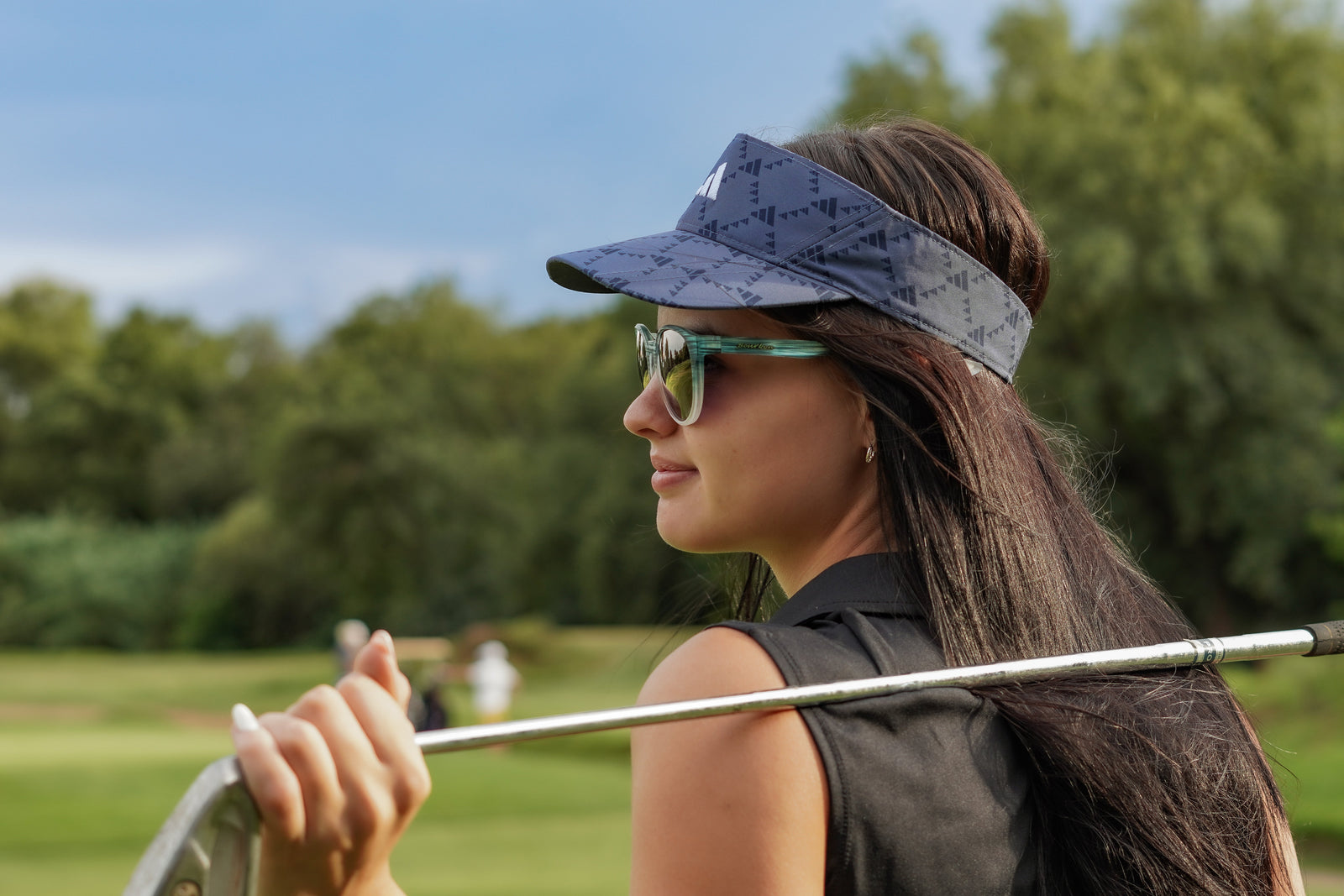When it comes to improving your performance on the golf course, clarity of vision can be just as important as having the right clubs. While polarized sunglasses are known for reducing glare, high-contrast sunglasses are designed to enhance depth perception and sharpen the colors around you. This makes them a great alternative for golfers who need precision without the potential drawbacks of polarized lenses.
In this article, we’ll explore how high-contrast sunglasses work, their benefits for golfers, and when they might be a better option compared to polarized sunglasses.
What Are Polarized Sunglasses?
Polarized sunglasses are a staple in outdoor sports, offering glare reduction and enhanced visibility in bright conditions. They achieve this by filtering horizontal light waves, which are the primary source of glare. This makes them ideal for environments where reflections are a common problem, such as water hazards, wet grass, or even sand traps on a golf course.
How They Work
Polarized lenses use a specialized chemical coating that blocks horizontal light waves while allowing vertical light to pass through. This technology effectively cuts down glare, providing a clearer and more comfortable view.
Benefits for Golfers
- Enhanced Focus: Glare can be incredibly distracting, especially when lining up a shot or putting. Polarized lenses minimize this distraction, allowing you to concentrate better.
- Reduced Eye Strain: Prolonged exposure to glare can lead to squinting and fatigue. Polarized lenses reduce these effects, making them perfect for long rounds.
- Improved Comfort: By blocking harsh light, these lenses make it easier to play in bright sunlight without discomfort.
What Are High-Contrast Sunglasses?
High-contrast sunglasses focus on enhancing the visibility of colors and textures rather than reducing glare. They achieve this by manipulating light wavelengths to increase the contrast between different hues. For golfers, this means better terrain recognition and improved ability to read greens.
How They Work
High-contrast lenses filter out specific wavelengths of light, making certain colors more vibrant while muting others. This heightened contrast helps golfers distinguish subtle variations in terrain, such as slopes, grass types, and hazards.
Benefits for Golfers
- Better Green Reading: High-contrast lenses make it easier to spot subtle variations in texture and color, helping you judge slopes and breaks more accurately.
- Enhanced Depth Perception: These lenses provide a sharper sense of depth, crucial for gauging distances and selecting the right club.
- Improved Ball Tracking: By enhancing color separation, high-contrast lenses make it easier to follow your ball in flight, even against challenging backdrops like trees or cloudy skies.
Key Differences: Polarized vs. High-Contrast Sunglasses
| Feature | Polarized Sunglasses | High-Contrast Sunglasses |
|---|---|---|
| Primary Benefit | Glare reduction | Enhanced color and depth perception |
| Best For | Bright, sunny days with glare | Mixed lighting and detailed terrain |
| Drawback | Can distort depth perception | Limited glare reduction |
| Performance in Golf | Reduces glare from water and wet grass | Improves green reading and ball tracking |
Scenarios Where Polarized Sunglasses Shine
1. Courses with Water Hazards
Water surfaces reflect sunlight intensely, creating blinding glare. Polarized lenses cut through this glare, allowing you to focus on your swing or your target.
2. Bright, Open Courses
If you’re playing on a wide-open course with minimal shade, the sun’s intensity can be overwhelming. Polarized lenses reduce overall brightness, providing a more comfortable experience.
3. High-Altitude Golfing
At higher altitudes, UV exposure increases significantly. Polarized sunglasses not only reduce glare but also provide essential protection against harmful rays.
Scenarios Where High-Contrast Sunglasses Excel
1. Green Reading
High-contrast lenses enhance the subtle differences in grass texture and color, making it easier to judge slopes and breaks on the green.
2. Tracking Your Ball
Golfers often struggle to follow their ball against a bright sky or a backdrop of trees. High-contrast lenses sharpen the white of the ball, making it stand out against its surroundings.
3. Mixed Lighting Conditions
For courses with varying lighting like shaded areas under trees or cloudy skies high-contrast lenses maintain clarity, ensuring consistent vision.
When to Use Both
For golfers who frequently play in diverse conditions, having both polarized and high-contrast sunglasses can be a game-changer. Here’s how you can decide which to use:
- Use Polarized Sunglasses: On bright, sunny days or courses with reflective surfaces.
- Use High-Contrast Sunglasses: When green reading, tracking the ball, or playing in mixed light.
FAQs About Golf Sunglasses
1. Do polarized lenses affect depth perception?
Yes, in some cases. Polarized lenses can slightly distort depth perception, which might make them less ideal for activities requiring precise judgment of distances.
2. Are high-contrast sunglasses good for everyday wear?
High-contrast lenses are excellent for activities like driving or hiking but may alter natural color perception slightly.
3. Do I need UV protection in both lens types?
Absolutely. Whether polarized or high-contrast, UV protection is essential for protecting your eyes from harmful rays.
Additional Factors to Consider
- Lens Material: Look for shatter-resistant materials like polycarbonate for durability.
- Frame Fit: Ensure a snug fit to prevent slipping during swings.
- Lens Coatings: Features like anti-scratch and hydrophobic coatings add durability and usability.
Conclusion
Choosing between polarized and high-contrast sunglasses for golf depends on your priorities and the conditions you play in. Polarized sunglasses are unbeatable for reducing glare, while high-contrast lenses excel in enhancing depth perception and color clarity.
For golfers who play in varied conditions, having both types in your bag ensures you’re always prepared. Investing in the right pair of sunglasses not only protects your eyes but also enhances your performance, letting you focus on what matters—your game.

